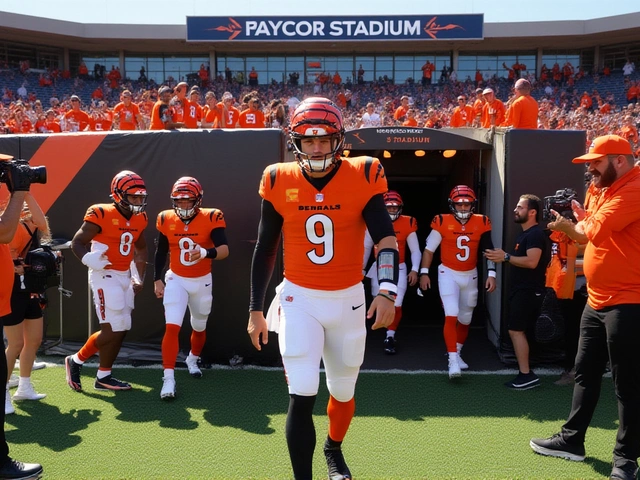When Sebastian Telfair stepped onto the court for the Boston Celtics in October 2006, he was a 21-year-old phenom with top-10 potential. Just weeks later, his career began unraveling—not from a bad shot or a missed assignment, but from a violent robbery outside a Manhattan nightclub that had nothing to do with basketball. "Boston was terrible for my career," Telfair told Basketball Network in October 2023. "And honestly? Basketball had little to do with that."
The Night Everything Changed
On a chilly October night in 2006, Telfair was leaving Justin's Restaurant & Bar in Manhattan, a hotspot owned by hip-hop mogul Sean "Diddy" Combs. That same night, rapper Fabolous was shot in the left thigh inside the venue. Telfair, wearing a $50,000 gold chain, was robbed of it just steps from the entrance. Police questioned him as a person of interest. No charges were ever filed. But the damage was done. "That really hurt him," said Daniel Turner, a close friend. "He was playing well. Really excited about being on a playoff team. That was the most down I've seen him." The incident happened just three games into the 2006-2007 season. The Celtics, fresh off a 45-win campaign and playoff aspirations, didn’t publicly condemn Telfair. But whispers spread. The media circled. Fans, notoriously harsh in Boston, turned cold. His minutes dropped. His confidence cracked.From Draft Hope to Bench Warmer
Telfair was the 13th overall pick in the 2004 NBA Draft by the Portland Trail Blazers. He expected to run the offense. Instead, he sat. "You draft a point guard 13th and then not give me the rock?" he later told Dwight Howard in a YouTube interview. "That ain’t make sense. I don’t think I recovered." Portland didn’t develop him. Boston didn’t trust him. After the Manhattan incident, his playing time dwindled. He appeared in just 14 games for the Celtics that season, averaging 4.3 points and 2.1 assists. He was traded to the Oklahoma City Thunder in 2008, but the numbers didn’t lie: Oklahoma City Thunder was outscored by 12.3 points per 100 possessions when he was on the floor, according to NBA.com data cited by Bleacher Report. "We had no issues with Telfair," an anonymous Thunder assistant coach told Bleacher Report. "They just didn’t think he was very good." He was waived in December 2008. His final NBA game came in April 2009. He was the last player from the 2004 draft class to appear in the league.The Aftermath: Fame, Fashion, and Family
Telfair didn’t vanish. He moved to Miami, trained at DBC Fitness—where LeBron James and Dwyane Wade worked out—and signed with the Xinjiang Flying Tigers in China in 2014. He never returned to the NBA. But he built something else: 99 Moves, a fashion brand he launched in Orlando, Florida. He still lives in his mansion there, with a backyard pool, his wife, and their three kids. He cooks them pork chops on weekends. Takes them shopping at local malls. He still posts his Thunder highlights on Twitter. "I don’t think he ever accepted it," said an unnamed associate in the 2018 Bleacher Report piece. "He still thinks he belongs."Why This Story Matters
Telfair’s story isn’t just about a player who didn’t pan out. It’s about how quickly a young athlete’s life can fracture under pressure—especially when the world watches. He was 21. He had money. He had fame. He didn’t have mentors. He didn’t have a safety net. "I don’t think the problem was ever his game," the same associate said. "It was other stuff. People around him, telling him what to do, what he shouldn’t do. You know, when you’re that young with that much money, it’s hard." The Boston Celtics didn’t break him. The robbery didn’t break him. But the silence after it did. The lack of support. The fan backlash. The media frenzy. He wasn’t a villain. He wasn’t a criminal. He was a kid in over his head—and the system failed him.What’s Next for Telfair?
As of 2024, Telfair remains out of the spotlight. He doesn’t do interviews often. But he’s not bitter, he’s just… done. He’s focused on his family, his brand, and his peace. Still, his name lingers in NBA draft discussions. "Remember Sebastian Telfair?" fans ask. "He could’ve been something." Maybe he was. Maybe he still is—just not in the way anyone expected.Frequently Asked Questions
Why did Sebastian Telfair’s NBA career decline so quickly after joining the Celtics?
Telfair’s decline wasn’t due to poor performance alone. After being questioned by police following a high-profile robbery outside a Manhattan nightclub in October 2006, his playing time dropped sharply. Though no charges were filed, the Boston media and fanbase turned hostile, and the Celtics’ coaching staff lost confidence. His minutes fell from 18 to under 10 per game, and he never regained his rhythm.
Did the Portland Trail Blazers fail Sebastian Telfair before Boston?
Yes. Drafted 13th overall in 2004, Telfair expected to be a primary playmaker. Instead, he spent most of his rookie season on the bench, averaging just 12 minutes per game. In interviews, he admitted he never recovered from that disappointment. Portland’s lack of development and playing time set a tone that followed him to Boston, where he was never fully trusted.
What role did the Manhattan robbery play in his career?
The robbery, which occurred the same night rapper Fabolous was shot, turned Telfair into a media target. Though cleared of any involvement, the incident damaged his reputation and distracted him during a critical early season. The Celtics, already wary of his maturity, used it as justification to reduce his role. It was a turning point—not because of guilt, but because of perception.
How did Oklahoma City Thunder decide to release him?
Oklahoma City’s front office, led by Sam Presti, relied on advanced analytics. With Telfair on the court, the Thunder were outscored by 12.3 points per 100 possessions—among the worst marks in the league for any rotation player. They didn’t cite personal issues; they called it a basketball decision. But the timing, after his Boston trauma, made it feel like the final nail.
Is Sebastian Telfair still involved in basketball today?
Not professionally. He last played in the Chinese Basketball Association in 2015 and has since focused on his fashion brand, 99 Moves, and family life in Orlando. He still trains and follows the game closely, but he’s made peace with the fact his NBA days are over—though he occasionally posts his old highlights online, suggesting he hasn’t fully let go.
What lessons can young athletes learn from Telfair’s story?
Telfair’s story shows that talent alone isn’t enough. Young athletes need strong support systems, media training, and emotional resilience. The NBA drafts teenagers with millions in potential, but rarely prepares them for the chaos that follows. His downfall wasn’t a bad jumper—it was a lack of guidance when the world turned against him.



